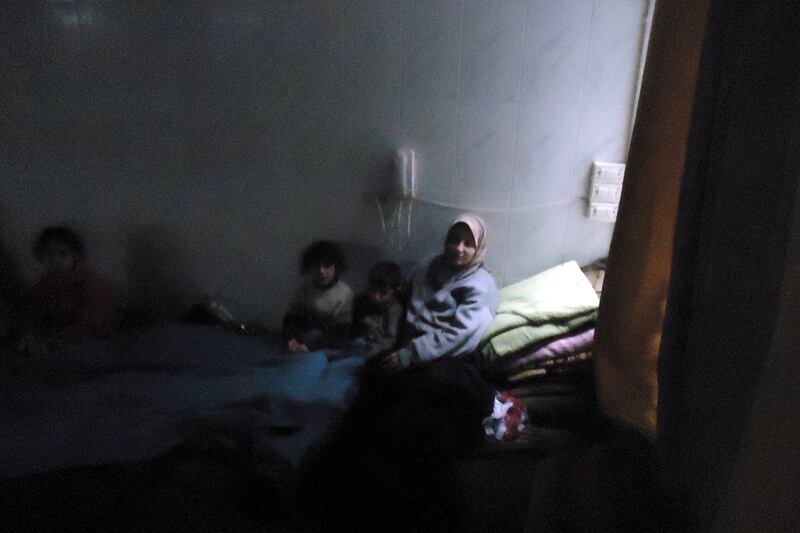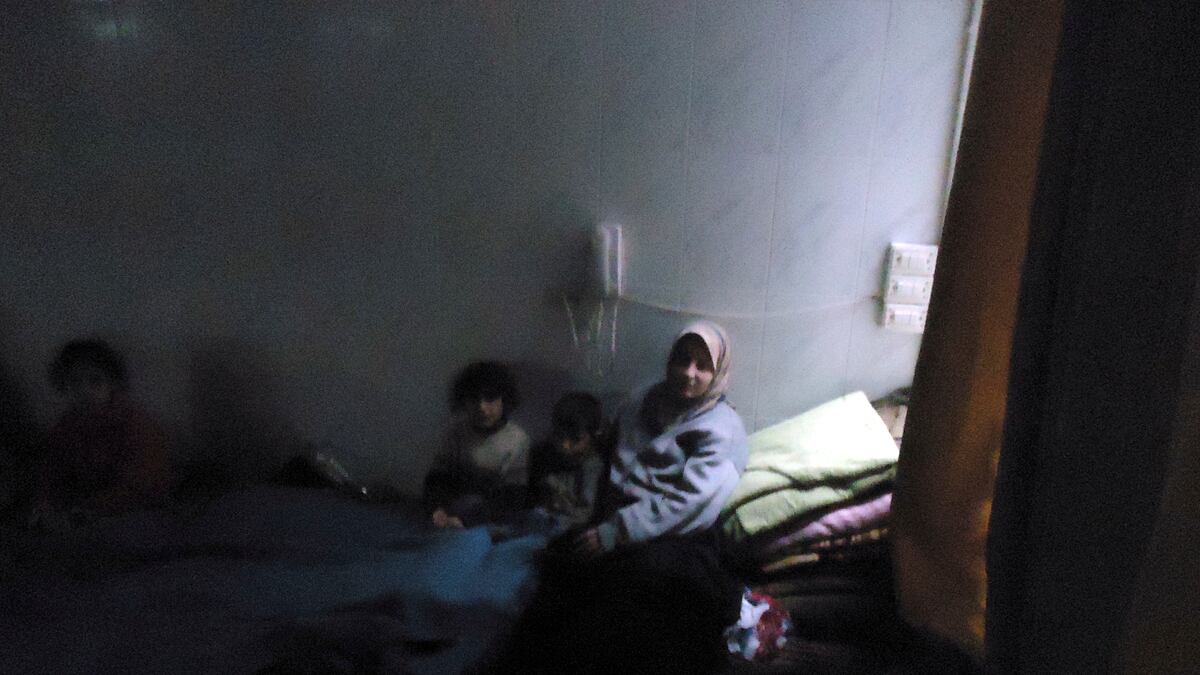Maras, 21, awoke yesterday morning at 6:00 a.m. to the sound of bombs falling on his neighborhood.
In his world, the Bab Amro neighborhood of Homs in central Syria, this was not the part of his day that shocked him most. This was how it had been for the past six days, he said, bursts of gunfire and shelling booming through the streets every half hour or so in the night, then picking up into a steady stream around dawn that lasted through the day. He ran out into the street, trying to reach the source to drag out the wounded, but was turned back by the strength of the gunfire, raining down from roofs outside the neighborhood. Later in the day, he went to help evacuate families from buildings in the hardest-hit sections of Bab Amro. This was the scene he couldn’t get out of his head—not of the children who cried as they left those buildings, which was normal, but of the ones who had stopped crying, too stunned to make any sound at all.
For the better part of a year, neighborhoods like Bab Amro in Homs have come under fire for their defiant anti-government protests. The violence took a sharp turn for the worse in recent months as they embraced the loosely coordinated groups of military defectors and armed individuals calling themselves the Free Syrian Army, who set up their own checkpoints within the neighborhoods and made it impossible for government forces to enter. But the assault of the past week represents an unprecedented escalation, with a staggering death toll.
After a Friday night onslaught that left some 260 people dead in the nearby neighborhood of Khaldiyeh alone, government forces continued lobbing explosives into other restive neighborhoods such as Bab Amro and Karm al-Zeitoun, seemingly emboldened by Russia’s and China’s double veto on Saturday of a Security Council resolution endorsing an Arab League plan for President Bashar al-Assad to step aside. On Wednesday, 93 people were killed throughout Homs alone, according to the Revolutionary Council of Homs. The group compiled dozens of videos posted on Youtube showing explosions shattering residential buildings, smoke billowing over open roofs, and doctors in private homes treating limb after bloodied, broken limb.

How it all began in Homs on Friday remains unclear. According to one version of events, a group of rebel forces seized some soldiers from a checkpoint just outside Khaldiyeh, prompting the government’s forces to enact their wild revenge on the city’s most resistant neighborhoods. Another has it that regime officials two weeks earlier had reached out to community leaders, sheikhs and old men from established families chosen to represent the neighborhood, to attempt to negotiate a solution. Led by notorious intelligence chief Asef Showkat, the president’s brother-in-law, they demanded that protests stop and defected soldiers be handed over, along with any weapons in the Free Syrian Army’s possession there. Talks broke down after about a week. In Syria’s layers of rumors and severed communications, neither story could be true or both could be true—though the latter squares with descriptions heard directly from the community leaders themselves in other restive areas of Syria.
Just on the other side of the border in northern Lebanon, a quiet, gangly 27-year-old named Wael sat in a rudimentary safe house watching the scenes unfold via a ceaselessly beeping Skype account. With him were two military defectors, recuperating from injuries sustained as they ran away from the Syrian armed forces, and three nurses, along with their families. Together, they received the wounded that smugglers brought over the border each day for treatment, walking up to five kilometers in some places to complete the trek. Theirs is a first port of call, providing only basic first aid along the underground railroad; it takes about two hours to reach Lebanon this way from Homs, and another four before the patients can be delivered to a hospital in Lebanon. “They’ve all been from Bab Amro in the past few days, mostly injured when rockets came inside their homes,” Wael said. That day, for example, brought four men without legs, one man with a head injury after the ceiling caved in on him, an 8-year-old child hit in the stomach, and three men hit by snipers in the chest. All were civilians, he said, though it was impossible to verify the account. With phone lines severed all over the Homs area, it had been days since he’d had contact with his family. The last time, he said, “there was an explosion in between each two words.” He said his blood was boiling over what was happening in Homs, though he sounded more exhausted than enraged.
Back on the one working Skype line to the activists’ home in Bab Amro, Maras and other young men gathered around the computer, reporting the humanitarian situation and joking about how much burghol wheat they had left to sustain them. Communications and electricity remained cut, they said, though satellite technology smuggled inside kept a handful of activists connected enough to deliver their missives to pan-Arab channels. A field hospital was bombed two days earlier, yet another hit to a medical community under duress. The Free Syrian Army was still guarding its positions on the edges of the neighborhood, they said, but with relatively light weaponry, was taking a battering. Government forces were trying to enter and take over a school inside Bab Amro, but kept being forced back. When asked if they thought the regime had won this round, the men put the army’s chances of taking back the neighborhood at 90 percent. “Yes, of course they won,” said one, Ahmad, bitterly. “That’s all they think about, winning. But who are they trying to win against? Normal people. What kind of a victory is that? They’re losing at the same time, too.”
Indeed, just as tanks were attempting to pound Homs back into submission this week, the shabab, or young men, of another city appeared to awaken. On Tuesday, video was posted online of the first gunshots ringing out in Sweida, capital of the previously quiet Druze heartland in southern Syria. “One, one, one, the Syrian people are one,” the shabab could be heard shouting, before the crackle of automatic gunfire turned the shouts riotous and sent the crowd scrambling. It was not the first time young Durzis have voiced their opposition to the regime in an uprising largely portrayed as Sunni-driven and minority-shunned—as a matter of fact, many Damascus-based activist leaders happen to be Druze, by virtue of urban migration patterns. But it was the largest and most disruptive to date in sleepy Sweida, and the first time security forces brought bullets into the mix. “They are confused at this point. They don’t know what to do,” said one Damascus-based observer, who also reported mortar blasts for the first time in her neighborhood this week. “It’s going out of control.” Assad’s security forces may yet win the battle in Bab Amro. Either way, with the only viable plan for a political resolution to the conflict in tatters, the war has barely just begun.





